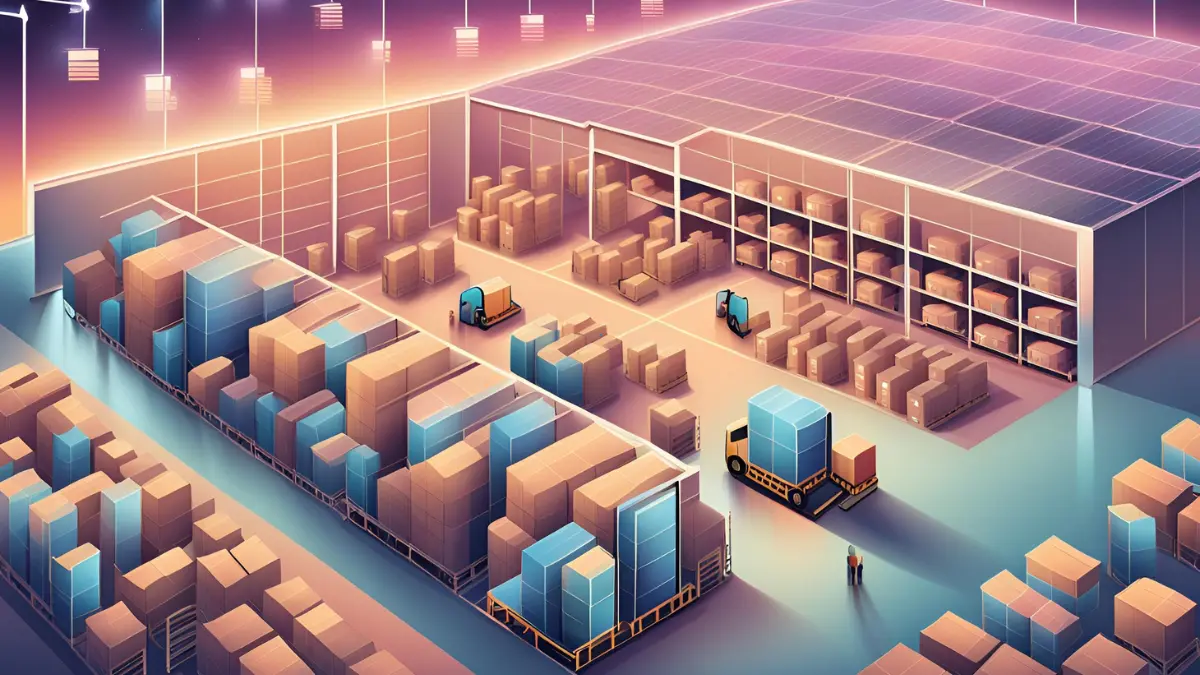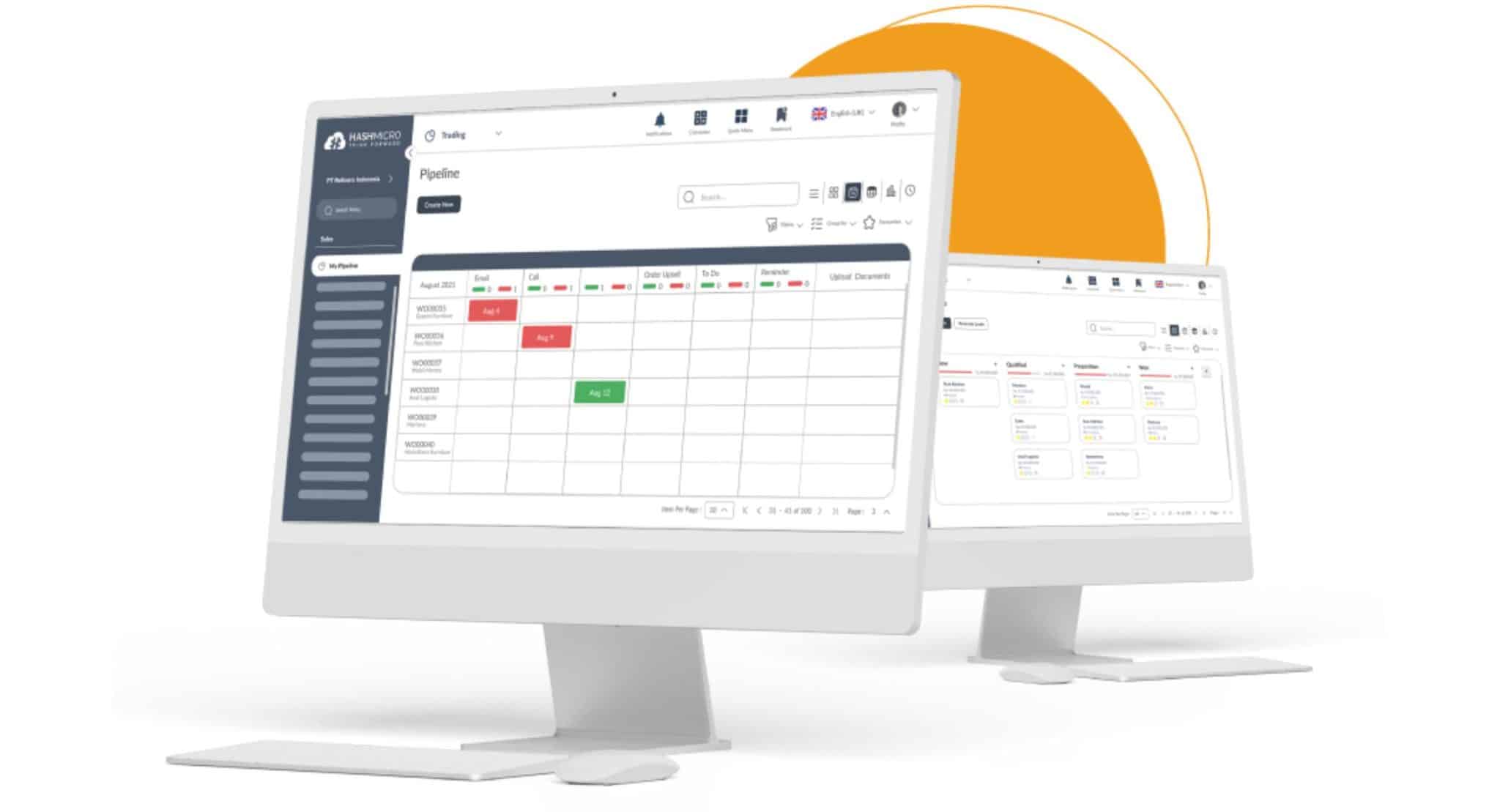Ang isang maayos na pamamahala ng distribution center ay higit pa sa simpleng imbakan, it’s the heart of efficient supply chains. These hubs streamline inventory, accelerate shipping, and cut costs, keeping businesses competitive in fast-moving markets.
By integrating automation and smart tracking systems, distribution center helps businesses reduce errors and maximize productivity. A well-structured facility ensures faster deliveries, better order accuracy, and improved customer satisfaction.
Whether for e-commerce, retail, or manufacturing, a distribution center plays a crucial role in meeting demand and scaling operations. Read on to explore its key functions, processes, and benefits.
Key Takeaways
|
Table of Contents

What is a Distribution Center?
A distribution center is a specialized facility where businesses store, process, and ship goods efficiently. Unlike traditional warehouses, distribution centers focus on quick turnaround times and streamlined logistics.
These centers play a key role in supply chains, ensuring products reach retailers, wholesalers, or consumers faster. They are designed for efficiency, helping businesses maintain optimal inventory levels while reducing storage and transportation costs.
Why Is Distribution Center Important?
Unlike traditional storage facilities, distribution center focuses on rapid inventory movement, ensuring products are available where and when they are needed. Here’s why distribution centers are important:
1. Faster order fulfillment
Speed and accuracy are critical in today’s fast-paced market. Distribution centers act as hubs for rapid inventory movement, ensuring products reach their destinations efficiently.
They help businesses process and ship orders quickly, reducing lead times and improving customer satisfaction. Advanced inventory systems track stock levels and automate picking processes, minimizing delays and enhancing efficiency.
2. Cost reduction in logistics
Effective logistics management is essential for minimizing expenses while maintaining operational efficiency. Distribution centers help optimize storage, streamline transportation, and reduce labor costs.
By centralizing operations, businesses can negotiate better shipping rates and bulk purchasing discounts, ensuring maximum profitability while maintaining smooth product distribution.
3. Scalability for businesses
As businesses expand, their logistics needs grow. A well-organized distribution center provides the flexibility to scale operations efficiently.
With adaptable storage systems and automation technologies, companies can manage increased order volumes without compromising efficiency or service quality.
How Does Distribution Center Work?

Distribution center is designed to ensure smooth operations by efficiently managing inventory, processing orders, and facilitating shipments. These facilities play a crucial role in reducing delays and maintaining supply chain reliability. By streamlining logistics, they also help businesses cut costs and improve overall efficiency.
Here’s a breakdown of their key functions:
- Receiving and inbound logistics: Distribution center verifies inventory, inspect product quality, and record stock levels upon shipment arrival. Efficient software helps manage deliveries, ensuring smooth coordination and reducing handling costs.
- Storage and inventory management: Organized storage methods like shelving, pallet racking, and automation improve accessibility. Real-time tracking prevents stock shortages, ensuring optimal inventory levels for smooth operations.
- Order processing and fulfillment: Orders are quickly picked, packed, and prepared for shipment. Automation tools such as barcode scanners and robotic picking enhance accuracy, reducing errors and labor costs.
- Shipping and outbound logistics: Products are efficiently loaded and shipped to their destinations. Route optimization and reliable logistics partnerships ensure timely deliveries, improving supply chain reliability and customer satisfaction.
Types of Storage Systems in Distribution Center
Did you know that different storage systems help businesses maximize space, improve inventory accessibility, and enhance overall workflow? The fact is this system is commonly used for different purposes. Below are some of the most commonly used storage solutions in distribution center:
1. Pallet racking systems (Adjustable, FIFO, Drive-In)
Pallet racking systems maximize storage capacity while ensuring easy access to inventory. These adjustable racks help businesses modify layouts based on product demand, improving organization and space efficiency.
FIFO (First-In, First-Out) systems ensure older stock is shipped first, preventing obsolescence—especially useful for perishable goods. Drive-in racking systems allow forklifts to access stored items directly, optimizing high-density storage by reducing aisle space. Both systems enhance inventory management and streamline fulfillment.
2. Automated Storage and Retrieval Systems (AS/RS)
Automated storage and retrieval systems (AS/RS) use robotic mechanisms to store and retrieve products efficiently. These systems minimize human intervention, reducing labor costs and processing time.
By integrating AS/RS, businesses improve order accuracy while maintaining consistent inventory tracking. This automation boosts productivity, enhancing overall warehouse performance.
3. Barcode and RFID-based inventory systems
Barcode and RFID technologies streamline stock tracking, improving inventory accuracy. These systems enable businesses to monitor product movement in real-time, preventing misplaced or lost items.
By scanning barcodes or RFID tags, workers reduce manual errors while accelerating order fulfillment. This innovation enhances supply chain transparency, ensuring smooth operational workflows.
4. Automatic Guided Vehicles (AGVs)
Automatic guided vehicles (AGVs) are autonomous transport systems that navigate fixed paths within a distribution center. These vehicles efficiently move inventory from receiving areas to storage locations without human intervention.
AGVs, such as robotic forklifts, are ideal for spacious environments that require repetitive material handling tasks. They enhance efficiency by reducing manual labor, minimizing errors, and improving workflow automation within the facility.
Distribution Center vs. Warehouse
| Feature | Distribution Center | Warehouse |
|---|---|---|
| Primary Function | Stores, processes, and ships products to fulfill orders | Long-term storage for bulk goods |
| Storage Duration | Short-term with high inventory turnover | Extended storage with minimal movement |
| Operational Focus | Rapid order processing and fulfillment | Inventory stockpiling with less frequent handling |
| Technology Usage | High (automation, robotics, real-time tracking) | Moderate (manual tracking, limited automation) |
| Processing Speed | Fast, ensuring quick order dispatch | Slower movement of goods |
| Supply Chain Role | Directly serves retailers or consumers | Supports manufacturers and wholesalers |
| Order Handling | Picks, packs, and ships orders efficiently | Rarely involved in direct order fulfillment |
Planning and Organizing a Distribution Center
A well-structured facility ensures smooth operations, minimizes delays, and maximizes productivity. Proper planning helps businesses optimize space, improve workflow, and integrate advanced technologies for seamless logistics management. Here are the details:
- Layout optimization for efficiency
An optimized layout improves material flow, reducing travel time for workers and machines. Well-planned layouts enhance space utilization, allowing businesses to store more products without expanding physical infrastructure. This design approach enhances productivity while reducing unnecessary operational costs. - Importance of safety and security standards
Implementing strict safety protocols prevents workplace accidents and ensures compliance with regulatory standards. Clear signage, protective barriers, and employee training programs enhance warehouse safety. Security measures such as surveillance cameras and access controls protect inventory from theft or damage. - Automation and technology integration
Automated systems improve speed, accuracy, and efficiency within distribution center. Robotics, AI-driven software, and conveyor systems reduce manual handling, optimizing warehouse operations. By leveraging smart technology, businesses enhance order accuracy and reduce processing time.
Benefits of Distribution Center
A distribution center offers several benefits to businesses looking to streamline operations and improve efficiency, such as:
- Lower inventory costs – Short-term storage reduces carrying costs compared to traditional warehouses.
- Faster shipping – Multiple distribution centers in key areas allow quicker deliveries, lowering shipping costs and improving customer satisfaction.
- Efficient order fulfillment – Centralized processing helps businesses handle large, multi-SKU orders more effectively.
Drawbacks of Distribution Center
Distribution center (DC) are critical to supply chains, but they come with certain challenges that can impact efficiency. Managing a DC requires precision and coordination to avoid operational difficulties that could affect fulfillment and overall performance. Here are some key drawbacks of Distribution Center:
- Operational complexity – Managing logistics requires precision, as small errors can lead to inefficiencies and bottlenecks.
- Inventory and fulfillment challenges – Miscommunication or disorganized layouts can slow down the picking, packing, and shipping processes.
- External disruptions – Natural disasters, labor strikes, or economic fluctuations can impact supply chain reliability.
- High operational costs – Running a DC incurs significant labor and equipment costs.
Optimize Your Distribution Center With HashMicro

Frequently Asked Questions
-
What is a distributed center?
A distribution center is a facility where goods are stored, processed, and shipped efficiently to fulfill orders and meet customer demands quickly.
-
What does a distribution center do?
A distribution center manages inventory, processes orders, and ships products in a timely manner to ensure efficient supply chain operations and customer satisfaction.
-
What is the primary function of a distribution center?
The primary function of a distribution center is to quickly process and ship orders, reducing costs and ensuring the smooth flow of products in the supply chain.





































